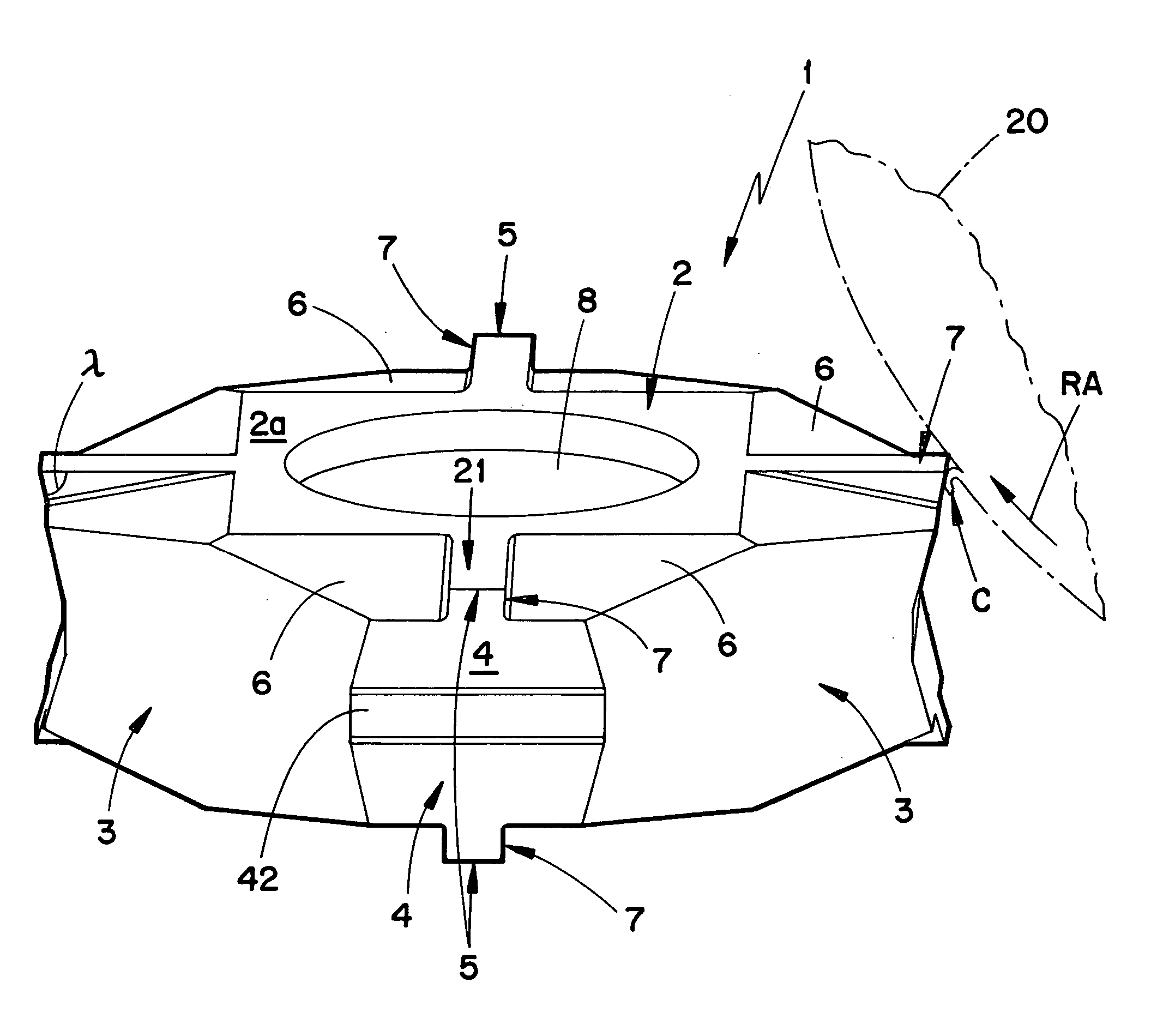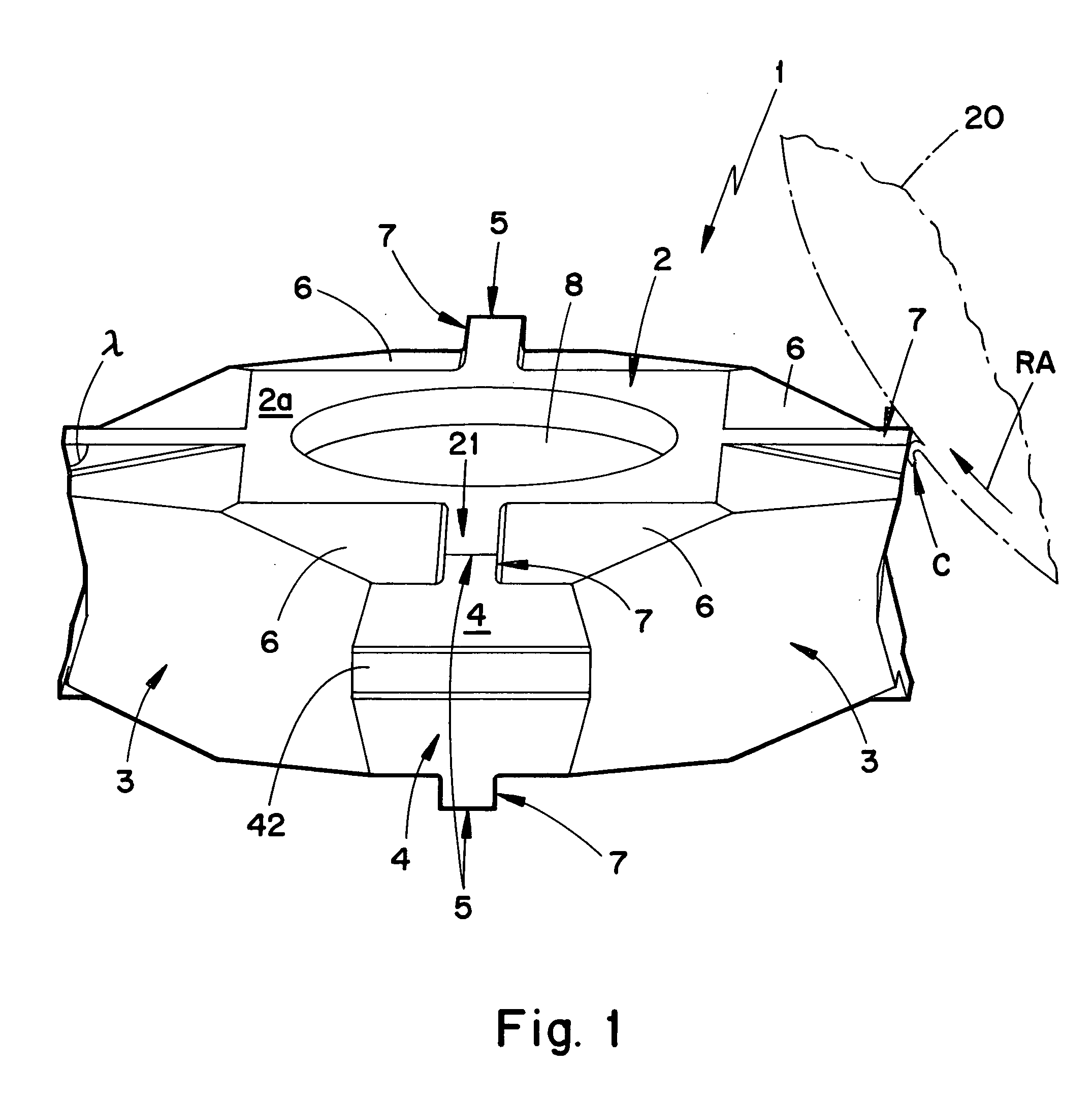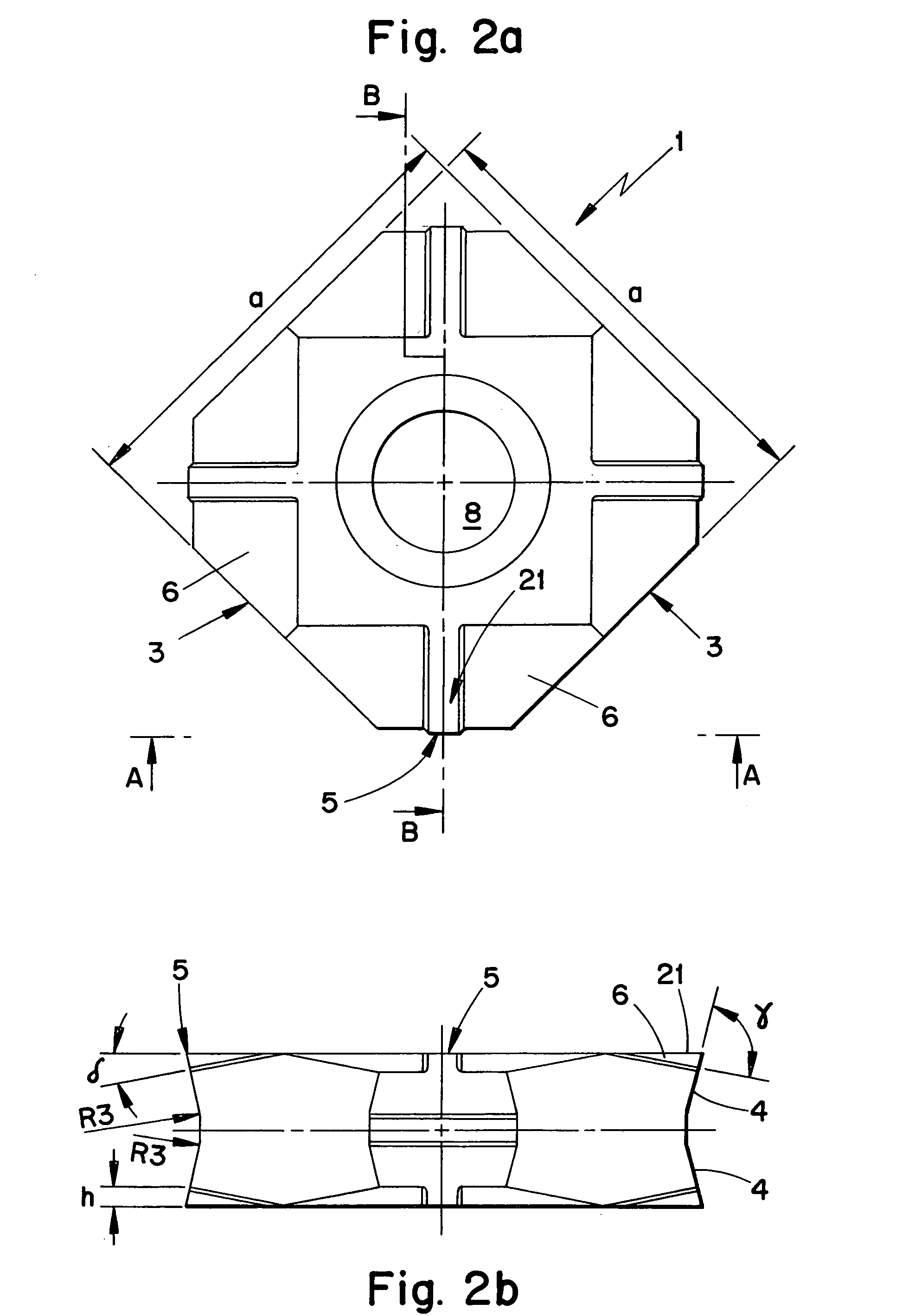Cutting insert for turning and milling
a cutting insert and milling technology, applied in the field of cutting inserts, can solve the problems of low fracture resistance, limited geometrical design, and still relatively expensive both in manufacture and in practical application
- Summary
- Abstract
- Description
- Claims
- Application Information
AI Technical Summary
Benefits of technology
Problems solved by technology
Method used
Image
Examples
Embodiment Construction
[0052] In FIG. 1 and in FIGS. 2a, 2b and 3a-3c can be seen the cutting insert 1 which has the basic shape of a polygonal parallelepiped.
[0053] The cutting insert has first and second (i.e., upper and lower) main faces 2, 2′ interconnected by a side face structure 3A to form therewith a peripheral edge 5A. The plane of the upper main face 2 is substantially defined by a central contact face 2a which surrounds a central fastening bore 8. The upper main face 2 includes branch surfaces 21, each of which projects from the center of one side of the contact face 2a. The branch surfaces define relief surfaces to respective narrow cutting edges 5 formed at the end of the branch surfaces. The branch surfaces have been made as a result of the fact that the upper face 2 on both sides of such a branch surface 21 has recesses, preferably in the form of flattened portions 6 which are declined at an angle δ (FIG. 2b) of between 10° and 25° relative to the central face 22, so that in the middle bet...
PUM
| Property | Measurement | Unit |
|---|---|---|
| Angle | aaaaa | aaaaa |
| Angle | aaaaa | aaaaa |
| Angle | aaaaa | aaaaa |
Abstract
Description
Claims
Application Information
 Login to View More
Login to View More - R&D
- Intellectual Property
- Life Sciences
- Materials
- Tech Scout
- Unparalleled Data Quality
- Higher Quality Content
- 60% Fewer Hallucinations
Browse by: Latest US Patents, China's latest patents, Technical Efficacy Thesaurus, Application Domain, Technology Topic, Popular Technical Reports.
© 2025 PatSnap. All rights reserved.Legal|Privacy policy|Modern Slavery Act Transparency Statement|Sitemap|About US| Contact US: help@patsnap.com



